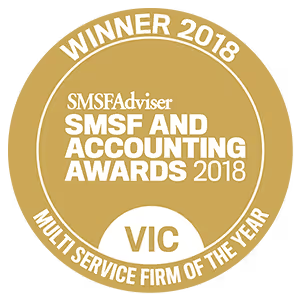One of the big advantages of setting up your self-managed super fund is the ability to make investments in a way that suits you. For some, this includes property.
If you’re thinking about purchasing commercial property through your SMSF, you must understand precisely what’s involved.
Contact Liston Newton Advisory today to discuss your SMSF administration. Your adviser will provide expert support and guidance and help you determine whether commercial property investment is right for you.
We have multiple offices across Victoria (stretching from the Melbourne CBD to Donald), New South Wales (where you’ll find us in the centre of Sydney), and Queensland (right in the heart of the Gold Coast). Or, if you'd prefer, we'll be happy to set up a virtual consultation.
[smsf_awards][/smsf_awards]
SMSF commercial property pros and cons
Investing in commercial property through your self-managed super fund (SMSF) can be a smart strategy, but it is essential to weigh the benefits and potential drawbacks. While it offers tax advantages and control over your investment, financial risks and regulatory requirements must be considered.
Advantages of buying commercial property through an SMSF
There are some distinct advantages to buying commercial property through your SMSF:
- Reduced super income tax of 15% makes it a tax-effective option.
- A quicker way to pay off business premise assets by holding your business premises in your SMSF and renting it to your business.
- Increased SMSF growth, by paying rent to your commercial property owned within your super, rather than a landlord.
- Increased asset protection, as your business is a separate entity from your SMSF.
- Greater tenancy security of your business premise, as it’s held by your SMSF
Disadvantages of buying commercial property through an SMSF
Despite the benefits, SMSF commercial property investment comes with challenges:
- Higher upfront costs, with a deposit of 30%–40% required for a loan.
- Limited liquidity — property is an illiquid asset, which may make it harder to access funds when needed.
- Stricter compliance rules, including market-rate lease agreements and ongoing SMSF audits.
- Additional stamp duty and tax implications if the property is acquired via a limited recourse borrowing arrangement (LRBA).
- Greater responsibility for property management, including maintenance, tenant agreements, and compliance with SMSF regulations.

Who should consider buying commercial property through their SMSFs
To help you decide if this is the right move for you, we’ll give you two examples of people who will benefit from this investment strategy: business owners and medical professionals who run their own clinics.
Business owners
As we’ve covered before, SMSFs are particularly useful for business owners. The flexibility of this structure allows you to purchase your business property using an SMSF commercial property loan.
As an example:
- You purchase an office for your business. You borrow the money within your SMSF and buy the office under your SMSF name. Your SMSF now owns this property.
- Now that your SMSF owns the property, it rents the space out to your business. Your business then pays rent to your SMSF — and your business can claim this rent as a business expense.
This means that your SMSF is using your rent to pay off the loan, and your rent goes directly to your SMSF as income.
Medical professionals
Buying medical premises is a very popular strategy for medical professionals, notably doctors and dentists.
In a medical practice where several medical professionals work together, each will likely have a considerable amount in their super. This gives them the flexibility to diversify their super assets into commercial property.
For example:
- Three doctors work together at a medical practice. They each pay a 30% service fee that covers administration expenses like rent, reception, and office facilities.
- An opportunity comes to purchase the premises they’re working in. After consulting with their accountant and financial adviser, the doctors decide to set up a unit trust. This unit trust borrows money to buy the premises.
- Each doctor has an SMSF, which holds 33.3% of the units in the unit trust. When doctors pay the 30% service fee each month, this money is deposited into the unit trust, which is then distributed between their SMSFs.
They each then receive a tax deduction on their medical business, and the rental income in their SMSF is subject to the low tax rate of 15%.

How to use your super for property investment
You can use your super to invest in property by setting up a self-managed super fund (SMSF) and ensuring it complies with ATO regulations. Your SMSF can purchase property outright with available funds or borrow through a limited recourse borrowing arrangement (LRBA). The property must meet the sole purpose test — meaning it must strictly be used for retirement benefits — and cannot be used as a residential property by fund members or related parties. Commercial properties offer unique advantages, such as leasing the property to your own business at market rates while benefiting from your super’s tax concessions.
[tip_box]
Download our guide to a financially successful retirement
This guide can help you make confident financial decisions as you plan for retirement
Inside you’ll find key insights and practical advice to help you retire on your terms—with enough savings to support the lifestyle you want.
- How much superannuation is enough to retire comfortably
- Tax-effective strategies to boost your retirement savings
- Transition-to-retirement strategies explained
- When and how to access your super
- Investment tips for income and stability in retirement
[/tip_box]
How buying commercial property with super funds works
There are a number of steps involved to get started in the SMSF property market. Here’s what you need to consider:
- Ensure you have the correct balance for a commercial property purchase. If you’re buying the property outright, you will need the full cash amount in your SMSF, plus stamp duty (approximately 5%).
- If you’re borrowing to buy a commercial property, you should expect to have a deposit of between 30%-40%, plus stamp duty. You’ll also need extra cash to cover legal expenses and ongoing expenses like rates, strata fees, insurance and miscellaneous property expenses.
- If you’re borrowing to buy a commercial property, it needs to be under a limited recourse borrowing arrangement (LRBA). This is beneficial for SMSF members; it protects your SMSF assets from your lender if the property loan goes bad.
- To set up an LRBA, first you need to set up a bare trust within your SMSF. This is essentially a separate trust within your SMSF that isolates the commercial property investment away from other investments.
- Select the property you want to purchase and make sure you can afford it through lending or a cash payment. When you succeed in purchasing the property, ensure you sign the contract in the name of your SMSF.
- Set up a commercial lease arrangement and document it with a lease agreement. The good news about commercial property is that you’re permitted to lease the property to a fund member for their business. Still, the rule is that commercial premises must be leased at the market rate — even if it’s for your own business.
- Congratulations! You’re now leasing a commercial property via your SMSF.
But remember that you still need to abide by the SMSF commercial property rules each year. You must meet your rent and keep a hawk’s eye on your SMSF accounting and compliance.
Options for purchasing property through your self-managed super fund
[table]
[thead]
[tr][th]Acquisition Option[/th][th]Description[/th][/tr]
[/thead]
[tbody]
[tr][td]Option 1. Your SMSF acquires commercial property via a cash purchase (outright purchase)[/td][td]This is the easiest method. There’s no need to set up a separate bare trust; you simply purchase the property and pay the additional stamp duty, all with cash. This option suits individuals with large amounts of cash in their SMSF.[/td][/tr]
[tr][td]Option 2. Your SMSF acquires commercial property via an LRBA[/td][td]For this option, you need to set up a bare trust within your SMSF. Then, you must get approval from a lender to borrow within your SMSF. You’ll need approximately a 30%–40% deposit.<br><br>The lender will also assess your SMSF contributions history and the terms of the rental income to determine whether they will lend or not.<br><br>This option suits people with a lower balance who can’t afford an outright purchase. However, you would still need at minimum $500,000–$600,000 in your SMSF to make it work.[/td][/tr]
[tr][td]Option 3. Your SMSF acquires commercial property indirectly via a non-geared unit trust[/td][td]Set up a unit trust outside of your SMSF. The SMSF buys units in the trust and transfers cash to the unit trust. The unit trust then purchases the commercial property without borrowing.<br><br>An SMSF member may choose to own all the units or partner with others to buy some of the units, either inside or outside their SMSF.<br><br>This option suits SMSF members who want flexibility in transferring ownership later on. For example, the same person could own 50% of the units in their SMSF and 50% in their family trust. They can then choose to sell some of these units to another party at a later date.[/td][/tr]
[tr][td]Option 4. Your SMSF acquires commercial property indirectly via a geared unit trust[/td][td]This option is similar to Option 3; however, the unit trust borrows to buy a commercial property. If borrowing occurs, an SMSF member can’t own more than 50% of the units in the trust.<br><br>This option suits SMSF members who don’t have enough cash for the unit trust to buy the property outright but have someone willing to partner with them.[/td][/tr]
[tr][td]Option 5. Your SMSF acquires commercial property from you via an in-specie transfer[/td][td]A commercial property owner may choose to sell the property to their SMSF. For example, a 65-year-old business owner may own his business premises through his business, and he’s selling the business. He can sell the business to another person and then have his SMSF buy the premises from his business.<br><br>This would mean he can continue to rent the business premises to the new business owner but receive the rent tax-free in his SMSF.[/td][/tr]
[/tbody]
[/table]
Contact a Liston Newton SMSF adviser to discuss the option that best suits your situation.
Other considerations when buying commercial property through an SMSF
Do SMSFs pay stamp duty on property purchases? Yes.
An SMSF must pay stamp duty when purchasing property, just like any other buyer. The amount varies by state and is calculated based on the property’s purchase price. If the property is acquired through a limited recourse borrowing arrangement (LRBA), stamp duty may apply twice — once when the bare trust initially holds the property and again when the SMSF takes full ownership. To avoid unnecessary costs, it’s crucial to structure the purchase correctly and seek professional advice before proceeding.
Renovating your property
Under an SMSF, you have to be careful when renovating your property. Simple repairs and maintenance can be paid with borrowed money.
Significant renovations need to be funded by cash directly available in your SMSF. This can’t be done through a loan or borrowed money.
Under an LRBA you’re not allowed to make substantial renovations or changes to the property. Renovations that significantly change the asset from its original purchased state require a new LRBA.
Purchasing the property in the right name
Your new property must be purchased and held in the name of your bare trust’s trustee. Everything in the purchase, from the details on the contract to the name on the certificate of title, must be under this name. So make sure you set up your bare trust before you buy the property, otherwise you’ll face costly stamp duty fees later down the track.
Being mindful of single acquirable assets
A single acquirable asset requires that if an investment property runs over multiple titles, a bare trust, trustee, and LRBA must be established for each title.
The ATO clarifies these situations specifically.
Single LRBA situations
- House and land package, or completed ‘off the plan’ property
- Apartment with a separate parking space
- Option (only) to purchase a house
- Factory that runs over multiple titles
Multiple LRBA situations
- Purchasing a block of land, with a house decided in the future
- Fully furnished serviced apartment, as the furniture is considered a separate asset to the apartment
- Farmland featuring multiple titles
- The seller may be selling two titles together despite the fact they can sell them separately
Be aware of fees and charges
Purchasing, owning, and selling an SMSF property comes with substantial associated fees and charges. If you’re not careful, these can make a dent in your SMSF. To combat these fees, it’s crucial that your fund’s income covers the outgoing costs, and also allows for growth.
SMSF contributions
As an SMSF is your fund, people often think that they can repay themselves with money they’ve made as personal contributions. This isn’t possible. An individual can certainly use part of their own money to help purchase the property. However, the ATO considers this a personal super contribution, so it can’t be accessed until the individual reaches preservation age.
Consult an expert in SMSF borrowing before making an investment
When it comes to SMSF property purchases it’s important to get advice from a specialist authorised to provide financial advice.
At Liston Newton Advisory, you get expert, tailored SMSF setup and advice backed by over 40 years of experience. With the SMSF Adviser 2018 Multi-Service Firm Of The Year award under our belt, our results speak for themselves.
[general_awards][/general_awards]






